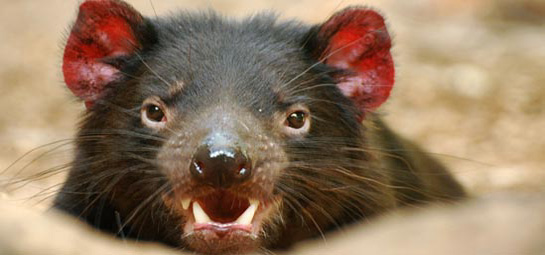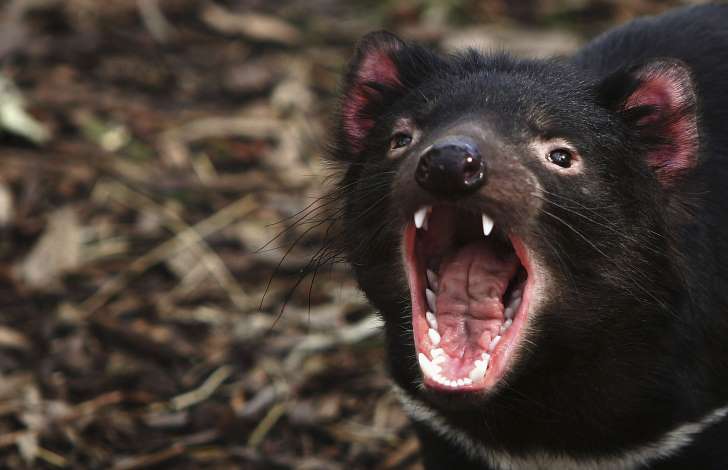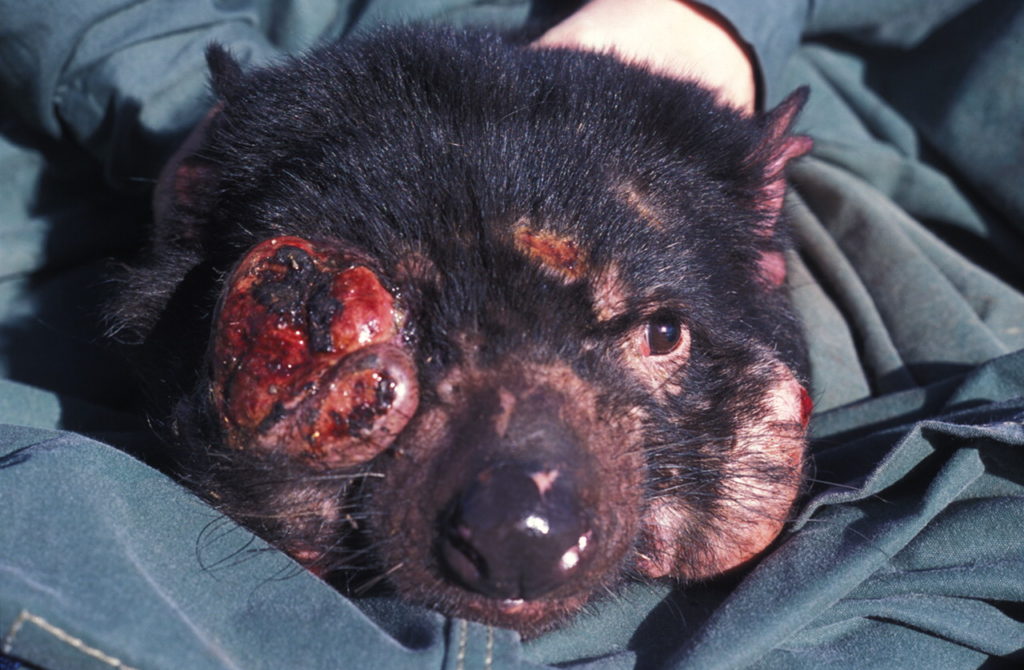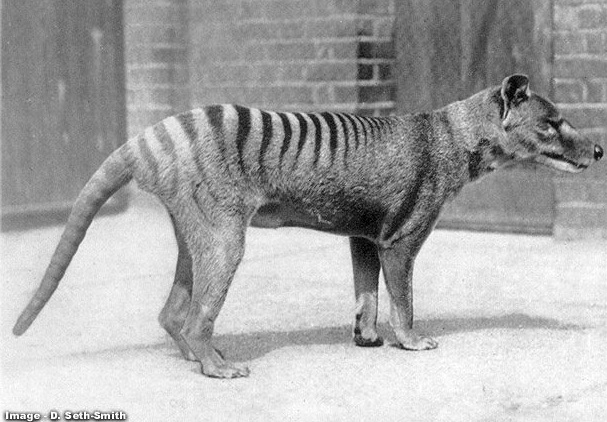
AUSTRALIA, Tasmania – In 2008 a deadly cancer had reduced the numbers of the Tasmanian devil up to 90 percent, placing them on the endangered species list. The cancer, devil facial tumor disease (DFTD) was first discovered around twenty years ago when these “corgi-sized” predators began developing facial tumors that proved fatal.
It wasn’t until a decade later, and much research, that it was realized that all cases of DFTD are genetically identical. What this means in lay terms is the tumors are clones of each other – that DFTD is a contagious form of cancer.

Contagious cancers are non-existent in humans. The closest form of contagious cancer is a development from infections like the HPV virus. The actual cancer, however, doesn’t spread between people. DFTD is only one of three known such contagious cancers ; the others have been discovered in dogs – a venereal tumor known as CTVT; and the water-borne leukemia found in soft-shell clams in North America.
University of Cambridge’s Elizabeth Murchison has studied the growth of DFTD in the Tasmanian devil for years, saying these transmissible cancers are “flukes of nature.”
Meanwhile in 2014…
Ruth Pye, a graduate student from the University of Tasmania noticed a facial tumor growing on a Tasmanian devil in captivity presenting similar to DFTD. Physically, its appearance was the same; genetically it presented itself as a new form of facial tumor that had X and Y sex chromosomes present comparable to DFTD (now known as DFT1), which have lost theirs.

The final conclusion after much study was these devils had developed a second form of contagious cancer.
The research team has now diagnosed the new tumor in eight devils, all from the same south region of Tasmania. “It’s telling us that there’s something we don’t understand about these cancers,” says Murchison. “They’ve arisen twice in Tasmanian devils in the last 30 years, which suggests that maybe they’re not that rare,” says Murchison. “Maybe something is triggering them, some kind of predisposing agent or infection,” says Murchison. “We really don’t understand it.”
To enhance the problem for the devils, the new DFT2 can spontaneously arise in the animal; so “insurance programs” keeping Tasmanian devils is isolated and safe communities, may not be enough to ensure this population’s survival.
**Not to be confused with the Tasmanian tiger (Thylacine), which was eradicated through a concerted effort born from ignorance, in the 19th and early 20th century.

This Article (Second Contagious Cancer arises in Tasmania) is a free and open source. You have permission to republish this article under a Creative Commons license with attribution to the author AnonWatcher and AnonHQ.com.




